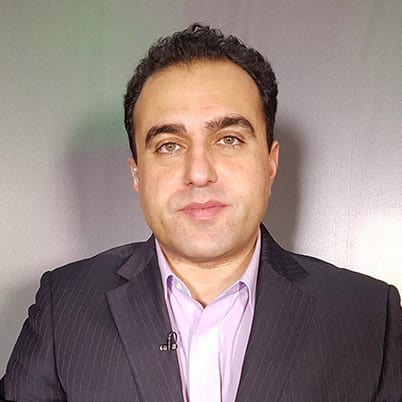The full implications of Saudi Arabia’s three-months old siege of the Qatif town of Awamiyah are only just beginning to emerge. Pictures depicting wholesale destruction and civil war-like conditions in the Shia-majority town speak to the intensity of the fighting. But more importantly, they provide a hint as to the nature of the threat facing the Saudi authorities.
Destruction of #Mosawarah of #Awamia followed by SSSF bullets. #Awamiasiege #Qatif #Saudi pic.twitter.com/qUrjWarQdn
— Angry Qatifi (@AngryQatifi) August 1, 2017
The Shia-majority Qatif governorate and the broader Eastern province within which it is situated has long been regarded as potentially hostile to the ruling Al-Sauds. The centrifugal forces in the Eastern province are critically important for three reasons. First, most of Saudi Arabia’s Shia minority (by some estimates comprising up to 15% of the population) is concentrated in the Eastern province. Second, the province houses the bulk of the Kingdom’s oil and petrochemical industries. Third, the Eastern Province is Saudi Arabia’s access point to the Gulf.
Furthermore, what happens in Qatif and the Eastern province more broadly is important as it can have a wider impact by stoking sectarian and political passions across the country. What the outside world does not appreciate is that Saudi Arabia is not as cohesive and homogeneous as its rulers pretend. But most important of all, the intensifying conflict in Qatif threatens to undercut Saudi Arabia’s new aggressive foreign policy, as demonstrated by the War in Yemen and Saudi-led attempts to ostracise Qatar.
An insidious insurgency
What is happening in Qatif today has all the hallmarks of a low-level insurgency, with regular attacks on security forces prompting a heavy-handed response by the state. The conflict often provokes kneejerk reactions and analysis. On the Saudi side, the authorities’ reflexive reaction is to apportion blame on Iran for the unrest. As for outside analysts, the conflict is often reduced to a Shia uprising against the Saudi state.
Read: Policeman killed, six wounded in eastern Saudi Arabia attack
While tensions in Qatif stretches back decades, the latest bout of instability can be traced to early 2011 when people of the Eastern Province – and to a lesser extent across Saudi Arabia – were inspired by the events of the Arab Spring. From the outset, the Saudi authorities attempted to blame Iran for the uprising despite offering no evidence to back up their claims.
For decades, Saudi Arabia’s main strategy in dealing with the socio-economic, political, cultural and religious grievances of the people of the Eastern province, has been to deprive them of effective leadership. As part of this strategy the Kingdom struck a historic accord with an important segment of the Shia leadership led by Sheikh Hassan al-Safar.
https://twitter.com/MohammadHM/status/299897404386332672
This accord sowed the seeds of long-term conflict as it was based on deliberate misunderstanding and unfulfilled promises. The Saudis interpreted the deal in expansive terms as settling all outstanding issues in respect of the Shia minority. This is despite the fact that al-Safar did not speak for the majority of Shias in the Eastern province, let alone Shias in other parts of the country, notably the half a million strong Shia Ismaili community in Najran.
The current radicalisation on the ground is in part a legacy of the leadership deficit which is constantly exacerbated by provocative Saudi actions. The execution of Sheikh Nimr Baqir al-Nimr in January 2016 was highly provocative and entirely in keeping with the Saudi strategy of removing effective community leaders.
As for the association with Iran, the Saudi authorities regularly reinforce the connection by convicting local activists and professionals on Iran-related spying charges. Beyond Saudi-generated information, it is very difficult to assess the extent of Iranian involvement in local unrest. The Iranian intelligence services and the Islamic Revolutionary Guards Corps’ Qods Force undoubtedly deploy a hidden hand. But their influence is mostly concentrated on exiled Saudi Shia opposition networks, based primarily in Beirut, Baghdad and London. The direct Iranian influence on the ground in Qatif is likely to be minimal.
Impact on foreign policy
More than anything the intensifying insurgency in Qatif calls into question the wisdom of Saudi Arabia’s aggressive foreign policy. Beginning with the military campaign in Yemen in March 2015, the new Saudi leadership had adopted an offensive posture against regional foes and rivals. The Kingdom has adopted an openly belligerent tone against Iran and more recently has led efforts to isolate Qatar on account of its independent foreign policy and support for regional opposition groups.
Read: Shia ‘terrorist elements’ kill Saudi child, Pakistani man in Qatif
Saudi Arabia may be able to contain the unrest in Qatif but the authorities won’t be able to eradicate the problem unless they address the issues at a political level. Meanwhile, there is every opportunity for the unrest to spread especially if the wider opposition overcomes the sectarian divide to find common cause with the grassroots protest movement in the Eastern province.
On the foreign policy front, evidence of Saudi failure continues to mount. Nowhere is the stake as high as in neighbouring Yemen where after more than two years of military action Saudi Arabia risks getting mired in a protracted and unwinnable conflict. More worrying for the Saudis, Iran continues to gain ground in Yemen and may yet emerge as the eventual victor.
Tragic. Over 200 #ChildrenUnderAttack killed in #Yemen in 2017 with hundreds more wounded @DailySabah https://t.co/c1MyZf4rSn
— UNICEF (@UNICEF) August 7, 2017
Much like its ideological nemesis Iran, Saudi Arabia harbours ambitions to dominate the region. But this ambition is neither supported by a comprehensive strategy nor strong internal foundations, as demonstrated by the fighting in Qatif. By pursuing belligerent domestic and foreign policies, the House of Saud risks serious instability further down the road.
The views expressed in this article belong to the author and do not necessarily reflect the editorial policy of Middle East Monitor.

![Image of Saudi Arabia's King Salman bin Abdulaziz Al Saud in Riyadh, Saudi Arabia on 21 May 2017 [Bandar Algaloud/Anadolu Agency]](https://i0.wp.com/www.middleeastmonitor.com/wp-content/uploads/2017/05/20170521_2_23801770_22355133.jpg?fit=920%2C593&ssl=1)







